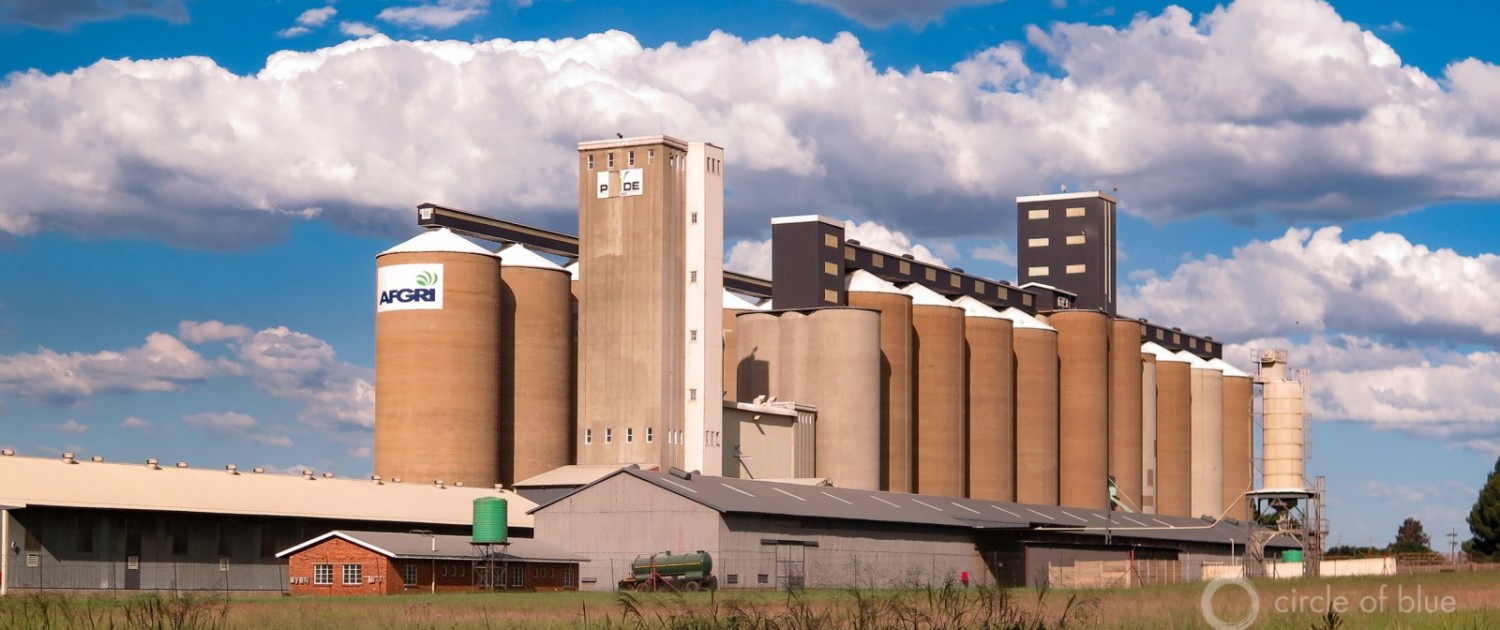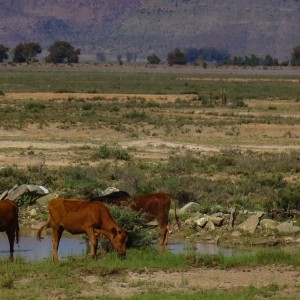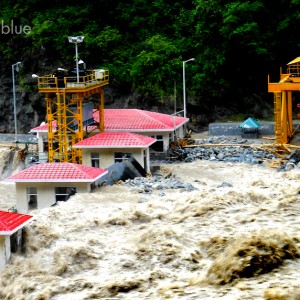
The Kusile generating station is set in South Africa’s Highveld, a region of abundant corn and sunflower fields that in the last two years have been damaged by a deep drought. Photo © Keith Schneider / Circle of Blue.
By Keith Schneider
Circle of Blue
By now, the middle of March 2016, all of the six steam turbines at the Kusile power station, each capable of generating 800 megawatts of electricity, were supposed to be operating with water-conserving, air quality-preserving, state of the art fossil fuel-fired efficiency. The anticipated commercial opening of the mammoth plant was to be celebrated as a globally significant statement about a new democracy’s capacity to think big, and prove that an African government can deliver fresh currents of electricity to growing cities and modern industries.
Perhaps the original five-year construction schedule was too ambitious. Certainly the initial estimate of Kusile’s completed cost was too hopeful. Yet what greets visitors to the plant’s construction site on the South African Highveld is a mega energy generation project that is setting new international standards for construction delays, cost increases, design and engineering conflicts, and ecological impediments.
Last summer, Eskom formally opened the first 800-megawatt turbine at Medupi. In February Eskom announced the planned opening of the first 800-megawatt turbine at Kusile, scheduled in 2014 to open during the summer of 2016, was pushed back to sometime in 2018.
“You have to wonder how vulnerable international financial institutions are to this kind of disruption, economic and environmental,” said Janet Redman, of the Institute for Policy Studies. “Kusile and Medupi looked great on paper when they started. Now they may not have enough financial resources to make the projects work. Who’s serving as the watchdog? Who’s looking at the details of these big investments?”
Circle of Blue’s senior editor and chief correspondent based in Traverse City, Michigan. He has reported on the contest for energy, food, and water in the era of climate change from six continents. Contact
Keith Schneider




